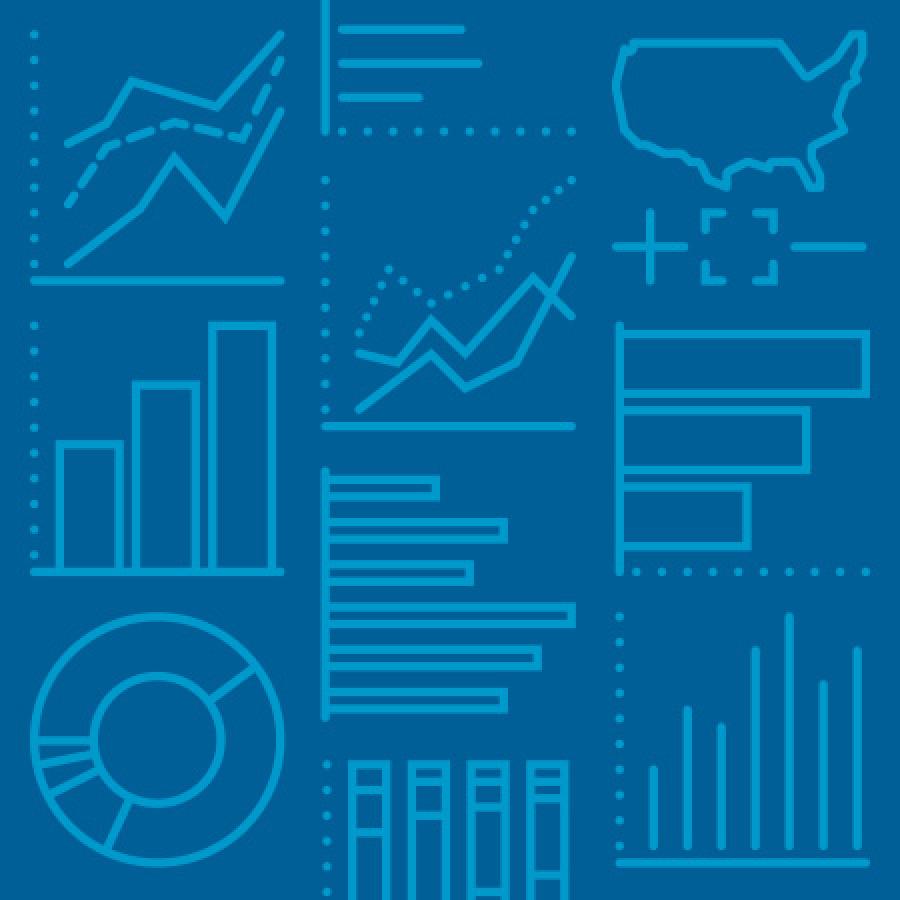The National Equity Atlas is America's most detailed report card on racial and economic equity. We equip movement leaders and policymakers with actionable data and strategies to advance racial equity and shared prosperity. The Atlas is produced by PolicyLink and the USC Equity Research Institute (ERI).
What We Do
The National Equity Atlas is a first-of-its-kind data and policy tool for the community leaders and policymakers who are working to build a new economy that is equitable, resilient, and prosperous. It is a comprehensive resource for data to track, measure, and make the case for racial equity and inclusive prosperity in America’s regions, and states, and nationwide. The Atlas contains data on demographic change, racial and economic inclusion, and the potential economic gains from racial equity for the largest 100 cities, 430 large counties, the largest 150 regions, all 50 states, and the United States as a whole.
PolicyLink and USC Equity Research Institute (formerly the Program for Environmental and Regional Equity) built the Atlas to equip community leaders and policymakers with the facts and analyses needed to:
- Understand how your community’s demographics are changing;
- Assess the state of equity in your community, based on how well your community’s diverse populations can participate in its economic vitality, contribute to its readiness for the future, and connect to its assets and resources;
- Build a compelling narrative and shared understanding about why—and how much—equity matters; and
- Inform the development of policies, plans, strategies, business models, and investments to advance equitable growth.
We democratize data and make it easy for you to understand, discuss, and use. Explore the Atlas to find:
- A holistic Racial Equity Index that provides a snapshot of how your community is doing on equity compared to its peers across nine key indicators;
- Customizable charts, graphs, and maps to share with your colleagues and on social media and add to your presentations, fact sheets, reports, and funding proposals;
- Stories about how local leaders are using equity data to catalyze new conversations and win new policies and investments in equity solutions; and much more!
The Atlas is a living resource, and we add new data and analyses on a regular basis. Sign up for our email list below and check back regularly for new data, analyses, and stories about how data is driving action to build an equitable economy.
We are grateful to the Bill & Melinda Gates Foundation, the Ford Foundation, the JPMorgan Chase Foundation, the Marguerite Casey Foundation, the Robert Wood Johnson Foundation, the San Francisco Foundation, the Skoll Foundation, the Surdna Foundation, the Tableau Foundation, the Target Foundation, the Truist Foundation, and the W. K. Kellogg Foundation, for supporting the National Equity Atlas.
Our Data
The Atlas draws its data from a unique regional equity indicators database developed and maintained by PolicyLink and ERI. Our database has several defining attributes: it incorporates measures of well-being and racial gaps; it provides several decades of data for cities, counties, and metropolitan regions that are geographically consistent over time; and it includes data disaggregated by race/ethnicity, gender, nativity, and income to the maximum extent possible. See our methodology for details on our sources and methods for each indicator.
How do I cite the National Equity Atlas?
We encourage you to use the data and graphics from the National Equity Atlas, and ask that you cite the Atlas as your source. Here are recommended citations:
- For policy briefs/websites/blogs/popular press: PolicyLink/USC Equity Research Institute, National Equity Atlas, nationalequityatlas.org.
- For journal articles/academic papers: PolicyLink and the USC Equity Research Institute; National Equity Atlas, nationalequityatlas.org, 2024.
How do you define race/ethnicity? Can the data be further disaggregated for additional ethnic subgroups?
How do you define race/ethnicity? In the Atlas, categorization of people by race/ethnicity is generally based on individual responses to various census surveys. For most indicators, people are categorized into six mutually exclusive groups based on their response to two separate questions on race and Hispanic origin, plus one more category for all people of color combined. Further detail about each category is listed on our Methodology page.
There are some inherent challenges to examining indicators by race. We use self-reported racial and ethnic identifications from the U.S. Census. When possible, we provide data for the six major racial/ethnic categories within the Census (White, Black/African American, Hispanic/Latino, Asian/Pacific Islander, Native American, and Mixed/other race), creating mutually exclusive categories by grouping everyone who identifies as being of Hispanic origin in the Hispanic/Latino category. We also present data by nativity and racial/ethnic subgroups defined by ancestry for some indicators when the sample size is large enough (we do not present data when the sample size is less than 100). We sometimes consolidate all people of color into a single category (individuals who do not identify as non-Hispanic White) for specific data points or in cases where the sample size is not large enough to disaggregate the data for major racial/ethnic groups. An additional challenge we face is that the Census historically undercounts people of color—something that is important to recognize but not something we are able to effectively address.
Can the data be further disaggregated for additional ethnic subgroups? The short answer is yes—but it depends on the underlying sample size in the survey from which data is being drawn, and in the particular geography for which data is being reported. In May 2016, we began adding data for racial/ethnic subgroups defined by self-reported ancestry to some indicators. The addition of racial/ethnic subgroup data was driven by the lack of easily accessible data describing the socio-economic diversity within the Asian or Pacific Islander community, which has long been subject to a "model minority" stereotype that does not accurately describe the experience of many groups within the community. However, to provide a comprehensive picture of the diversity that exists within each of the major racial/ethnic categories that are included in the Atlas, we disaggregated the data by ancestry for five of them (all except for the Mixed/other category, for which we think a more appropriate disaggregation would be by the various racial/ethnic groups people identify with rather than by ancestry).
The data for racial/ethnic subgroups allows a user, for example, to examine data on equity indicators for the large Southeast Asian population in Fresno or the large Middle Eastern/North African population in Detroit—groups that are typically buried in the broader “Asian” and “White” Census categories, respectively. It is important to note, however, that due to sample size limitations, the detailed racial/ethnic subgroup data is only available for geographies with large enough populations of the subgroups being disaggregated.
Current indicators with data by ancestry include median wage, unemployment, the percentage of workers making $15/hour, working poor, disconnected youth, homeownership, and educational attainment.
Why does the Atlas focus on race/ethnicity? What about the other dimensions of inequity?
The Atlas provides extensive data about racial equity and inclusion to allow users to examine how well diverse groups can access the resources and opportunities they need to participate and prosper. Race is a social construct, not a biological one, and in an equitable society, there would not be major differences across racial groups. The differences we do see are primarily due to historical and ongoing policies, decisions, and institutional practices that have racially discriminatory impacts, whether intended or unintended.
We recognize that inequities exist across many characteristics in addition to race/ethnicity and nativity, including income, gender, age, ability, sexual orientation, and neighborhood. Unfortunately, because we are working with survey data and seek to provide data for metropolitan regions, we are limited to the extent to which we can disaggregate the data. We will seek to add additional layers of data to examine other dimensions of inequity as the Atlas evolves.
Where can I find data by ancestry? By gender?
Where can I find data by ancestry? Data by ancestry is available for the following indicators: Disconnected youth, Educational attainment, Homeownership, Median age, Unemployment, Wages: Median, Wages: $15/hour, and Working poor. The availability of data by ancestry depends on the underlying sample size in the survey from which data is being drawn, and in the particular geography for which data is being reported. For more information about how we categorize people by ancestry, see our Methodology.
By gender? Data by race and gender is available for the following indicators: Wages: $15/hr, Unemployment, Wages: Median, Working poor, Educational attainment, Disconnected youth, Car access, and Housing burden. Note that these data sources do not provide complete data on gender identity: the surveys only allow for male/female gender identity and do not allow respondents to identify themselves as non-binary or transgender.
Most indicators on the Atlas are measures of central tendency (e.g. means and medians) based on survey data, and are subject to a margin of error. While we do not report margins of error, we do make efforts to avoid reporting highly unreliable estimates. Unless otherwise noted, for all indicators derived from the Census and ACS summary files, we do not report values that are based on fewer than 100 (weighted) observations in the denominator/universe.
Why is data missing for certain race/ethnic groups in some regions?
While our equitable growth indicators database incorporates a variety of data sources, much of our analysis is based on a unique dataset created using microdata samples (i.e., “individual-level” data) from the Integrated Public Use Microdata Series (IPUMS) for five points in time: 1980, 1990, 2000, 2010, and 2013 through 2017 pooled together. The IPUMS microdata allows for the tabulation of detailed population characteristics, but because such tabulations are based on samples, they are subject to a margin of error and should be regarded as estimates—particularly in smaller regions and for smaller demographic subgroups. In an effort to avoid reporting highly unreliable estimates, we do not report any estimates that are based on a universe of fewer than 100 individual survey respondents.
Where can I find data on: the Native American population? People with disabilities? The LGBTQ community?
Where can I find data on the Native American population? Data on the Native American population is available for several indicators. For more information see our Tribal Nations section.
Do you have data on disability? We don't currently have any data for disabled people. We know that local advocates often need data to describe their demographic and economic realities. We will try to add more indicators to the Atlas overtime when possible.
Do you have any data for the LGBTQ community? We do not currently have any data for the LGBTQ community in the Atlas because this data is not collected in the data sources that we use. Per the above note on gender, this is an important correction needed and we advocate for including non-binary gender categories in surveys. We will add additional indicators to the Atlas over time and are looking for data by sexual orientation and gender identity, particularly for the transgender community. Please share suggestions for data sources with us at info@nationalequityatlas.org.
Who can I contact with technical questions about the data and methodology?
We provide an overview of our overall methodological approach on our Methodology page, as well as a detailed methodological breakdown for each indicator on our Demographics, Economic Vitality, Readiness, Connectedness, Economic Benefits, and Equity Index Methodology pages. If you have additional questions about the data or methods, please contact Justin Scoggins, Data Manager at the Equity Research Institute, at info@nationalequityatlas.org.
How often will the data be updated? Will you add more geographies (smaller regions, counties, census tracts, etc.)?
How often will the data be updated? Most of the datasets underlying the indicators in the National Equity Atlas are updated annually, so most of the indicators will be updated annually as well. We also add new indicators periodically. Once added, they will follow a similar updating schedule.
Will you add more geographies (smaller regions, counties, census tracts, etc.)? We know that local advocates often need data at smaller geographic levels, including counties and neighborhoods, to describe their demographic and economic realities. We are planning to add 400 large counties to the Atlas in 2020. Unfortunately, data is not available for sub-regional geographies for many of the economic indicators in the Atlas that are based on the decennial census and American Community Survey Public Use Microdata Samples (PUMS files, from IPUMS USA).
Can I download the underlying data?
Yes, you can. Our aim is to democratize data and make it available to you to explore and use. If you click on the downward facing arrow on each breakdown, you will find the option to download an excel sheet with the underlying data for the breakdown along with options to download an image or a Powerpoint presentation. If you would like access to other data, please email us at info@nationalequityatlas.org detailing your request and plans for use, and we will try to package it for you.
Why does most data for 2019 represent a 2015-2019 average?
Many of the data points for 2019 are based on a pooled sample of five years of annual survey data (2015 through 2019) from the American Community Survey. Because a single year of the ACS data only covers about one percent of the U.S. population, five years of ACS data were pooled together to improve statistical reliability and to achieve a sample size that is comparable to that available in previous years (1980, 1990, 2000, 2010) which are based on the “long form” of the decennial census.
How are regions defined?
The Atlas currently includes the 150 largest metropolitan areas, or metros, based on their 2010 population. Metropolitan areas are based on the U.S. Office of Management and Budget’s December 2003 Core Based Statistical Area (CBSA) definitions. CBSAs include the county or counties or equivalent entities associated with at least one core urban area, plus adjacent counties having a high degree of social and economic integration with the core.
Why are there only 430 selectable counties?
When adding counties as selectable geography in the geographic drop-down menu for each indicator, our goal was to make sure that we could provide the same level of deeply disaggregated data (e.g. by race/ethnicity, gender, nativity and ancestry) that is available for all other selectable geographies on the Atlas. Given that most of this data stems from the decennial census and American Community Survey (ACS) microdata files from IPUMS USA, we only include counties that were identifiable 2019 5-year ACS microdata—the most recent data at the time counties were added. There are 430 such counties, all with larger populations of at least 100,000 people in 2010. While not all 430 counties are identifiable in earlier years of the microdata, and thus may be missing indicator data, they all had data in 2019 and we anticipate being able to update their data in the future. The 430 large counties are not exactly the most populous in the nation, they do include 89 of the 100 most populous in 2010 (those with at least 620,000 people) and account for 75 percent of all counties with at least 100,000 people in 2010.
Our Team
The National Equity Atlas is collaboratively developed and maintained by PolicyLink and the USC Equity Research Institute.

Abbie Langston
Vice President of Research

Alex Balcazar
Data Analyst at USC ERI

Arpita Sharma
Data Analyst II at USC ERI

Eden Pan
Data Management Specialist at USC ERI

Ezinne Nwankwo
Postdoctoral Research Associate at USC ERI

Jennifer Tran
Director, National Equity Atlas

Jeffer Giang
Data Analyst at USC ERI

Justin Scoggins
Senior Data Manager at USC ERI

Dr. Manuel Pastor
Director, USC ERI

Michael McAfee
CEO

Michelle Huang
Associate

Sabrina Kim
Data Analyst at USC ERI

Rosamaria Carrillo
Coordinator

Ryan Fukumori
Senior Associate

Selena Tan
Senior Associate

Simone Robbennolt
Associate

Vanessa Garcia
Data Coordinator at USC ERI
Contact Us
Have questions? Send us an email at info@nationalequityatlas.org and we will get back to you as soon as possible.
